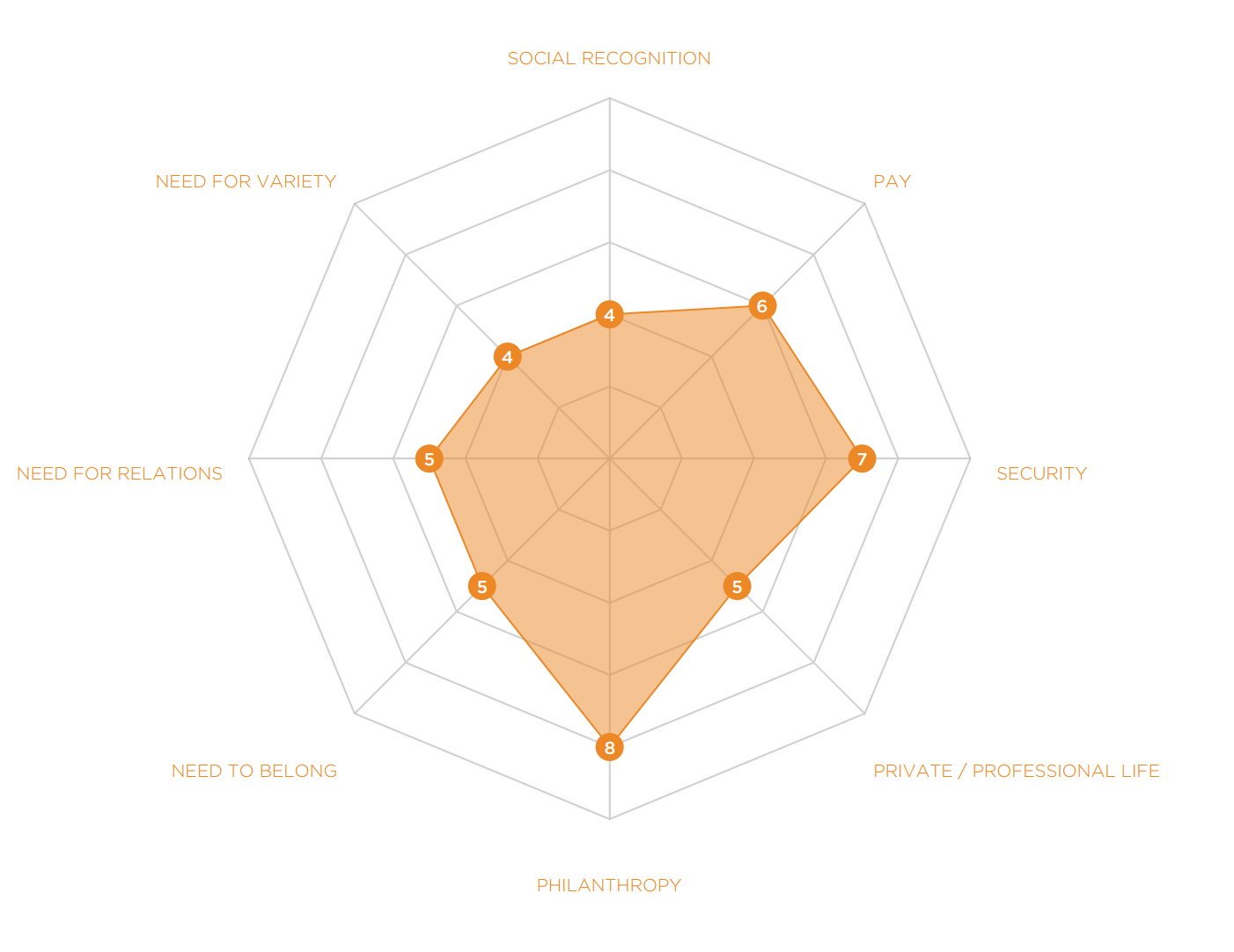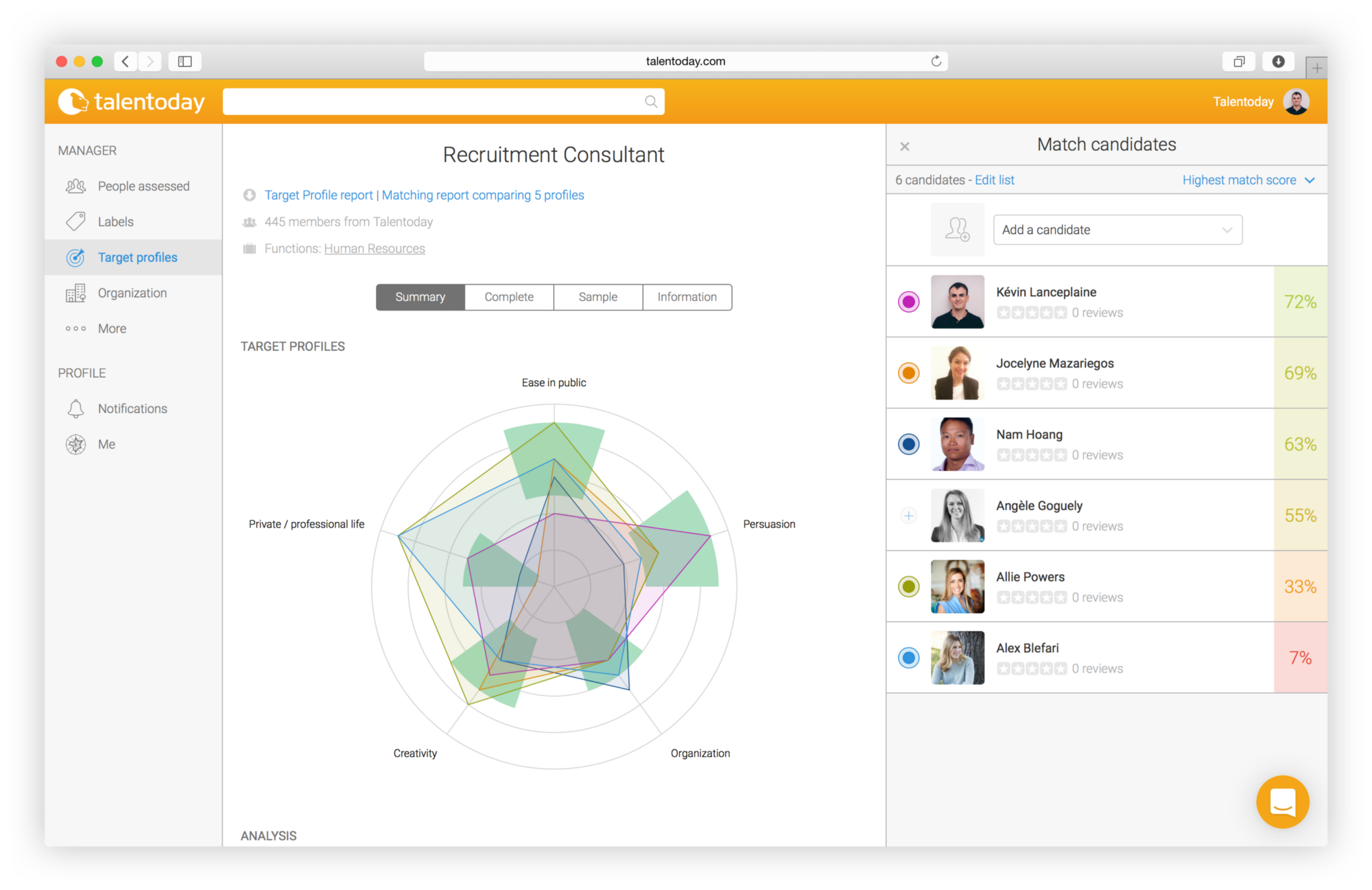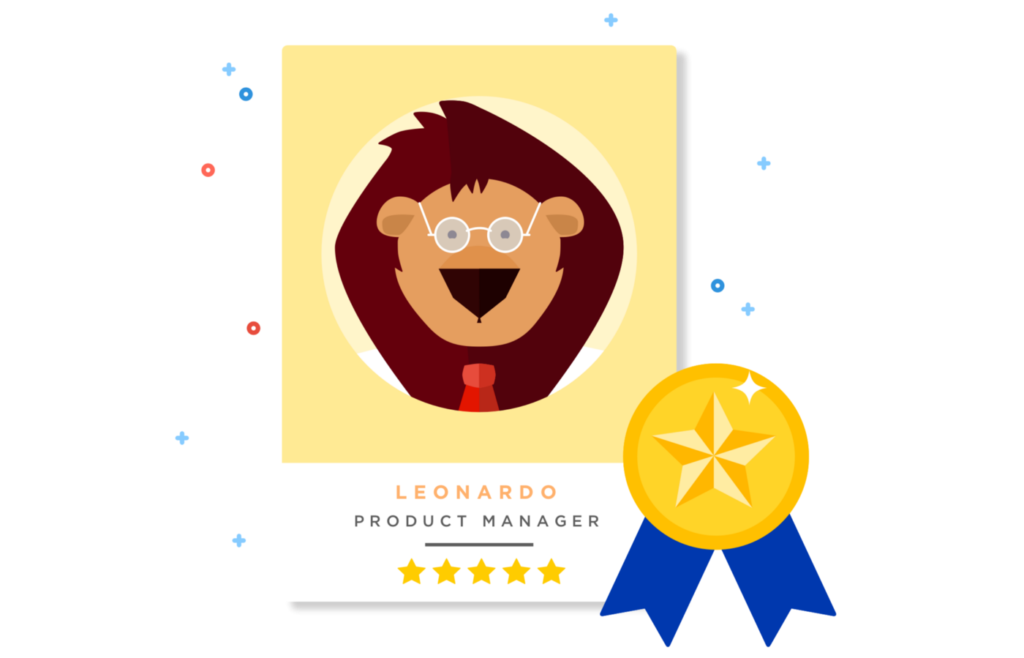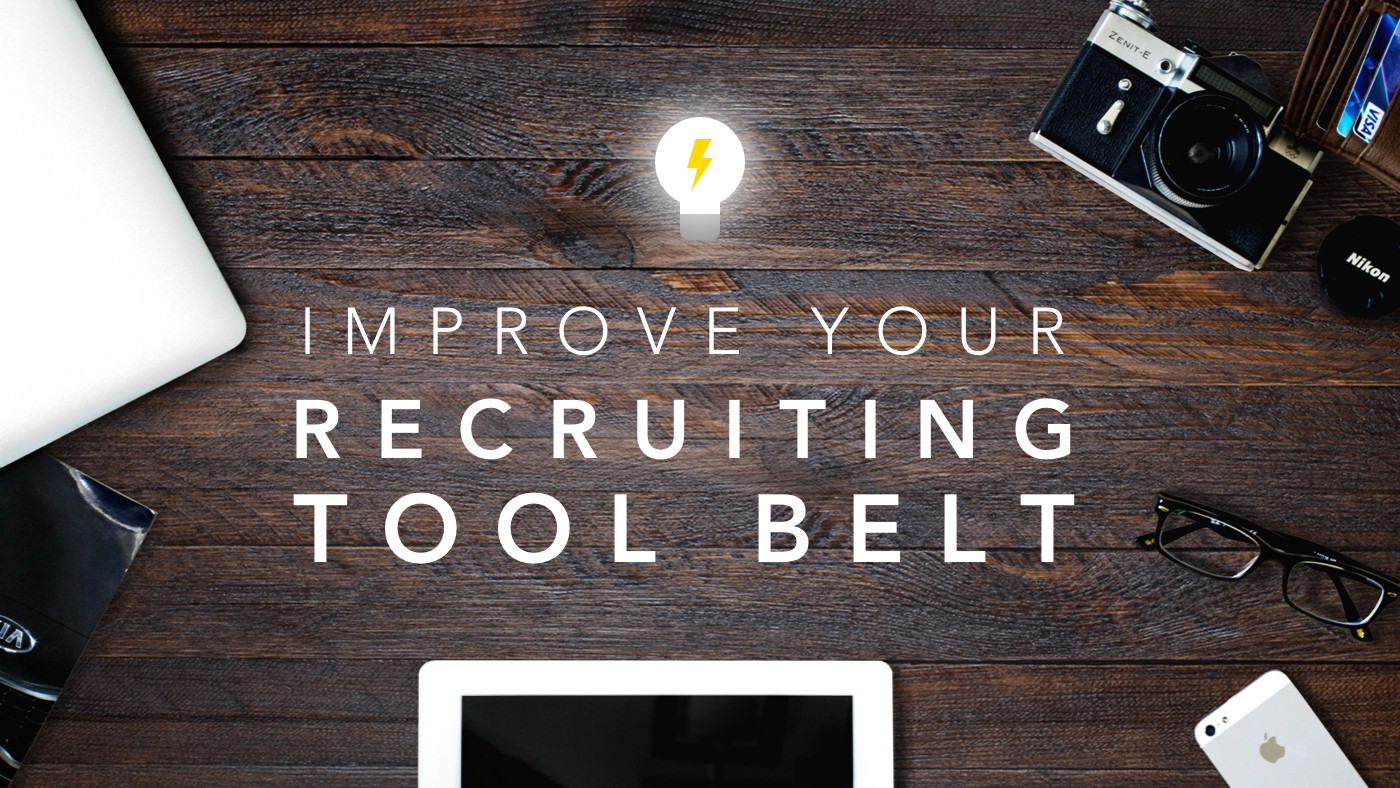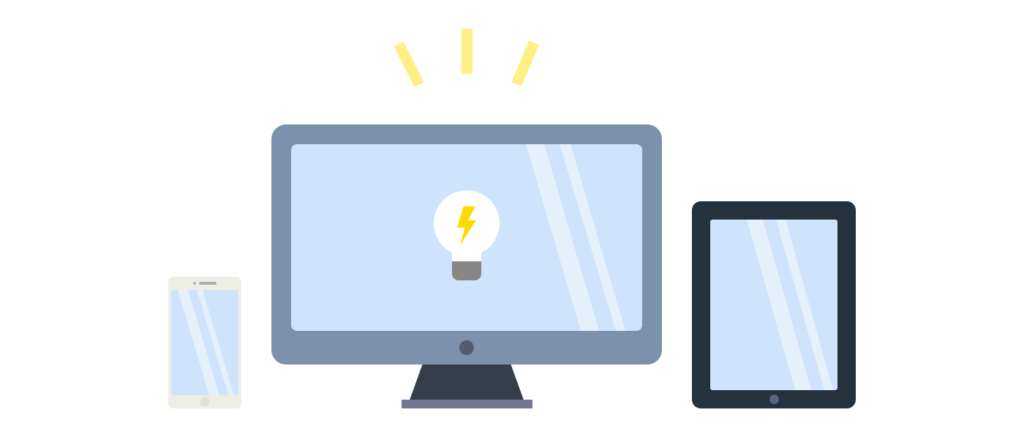Radio, Waves, Neuroscience… Do you Know What They Have in Common?

Today’s post deals with the relationship of strategy to human capital. Today, it is an inseparable pair whose interactions must be understood so that any adaptation, of individuals and organizations, to the new conditions of the working environment can be made in an optimal manner. Business models are changing, startups, however unstable, attract more young and dynamic executives, while large groups, large by their means, seem to fall off their pedestals*. If, at first glance, we realize, in dismay, that “the stability of an enterprise”, yet a dinosaur argument, is overcome by the dictatorship of the foosball, one wonders what will really motivate people to work in a company.
- Is it the technical skills?
- Is it the meaning of the missions?
- Is it the enrichment of individuals?
In other words, and to illustrate our point, we quote an excerpt from the book “Parallel Worlds” by Michio Kaku, American theoretical physicist and futurist.
“ All around you, there are hundreds of different radio waves being broadcast from distant stations. At any given instant, your office or car or living room is full of these radio waves. However, if you turn on a radio, you can listen to only one frequency at a time; these other frequencies have decohered and are no longer in phase with each other. Each station has a different energy, a different frequency. As a result, your radio can only be turned to one broadcast at a time.Likewise, in our universe we are “tuned” into the frequency that corresponds to physical reality. But there are an infinite number of parallel realities coexisting with us in the same room, although we cannot “tune into” them. Although these worlds are very much alike, each has a different energy. And because each world consists of trillions upon trillions of atoms, this means that the energy difference can be quite large. Since the frequency of these waves is proportional to their energy (by Planck’s law), this means that the waves of each world vibrate at different frequencies and cannot interact anymore. For all intents and purposes, the waves of these various worlds do not interact or influence each other.”
What about the neurosciences?
Neurosciences, and psychometry in particular, intervene to support this exercise of search and identification of “frequency” in the field of human capital management. A new way to rethink management. When psychometry sets foot in the company, in this place of authority, rules and processes, it is to bring intelligence and well-being to all those who are trying to escape by promoting the alignment of “frequency” of the individual with his work environment. And finally, it is also to bring more efficiency, competitiveness, to the organisation and ultimately results by almost drastically reversing the commitment of its employees. In conclusion, I invite you to discover your frequency. Take the test here for free or ask for a custom demo here!
MICHIO KAKU: Graduated from Harvard (B.sc.,1968) and Berkeley University (Ph.D.,1972). Engaged in work on the “theory of everything” seeking to unify the four fundamental forces of the universe. Among his books “ Physics of the Future: How Science will Shape Human Destiny and our Daily Lives by the Year 2100”.
* Only 9% of the employees in France say they feel engaged at work, Gallup 2013
Talentoday Manager updates
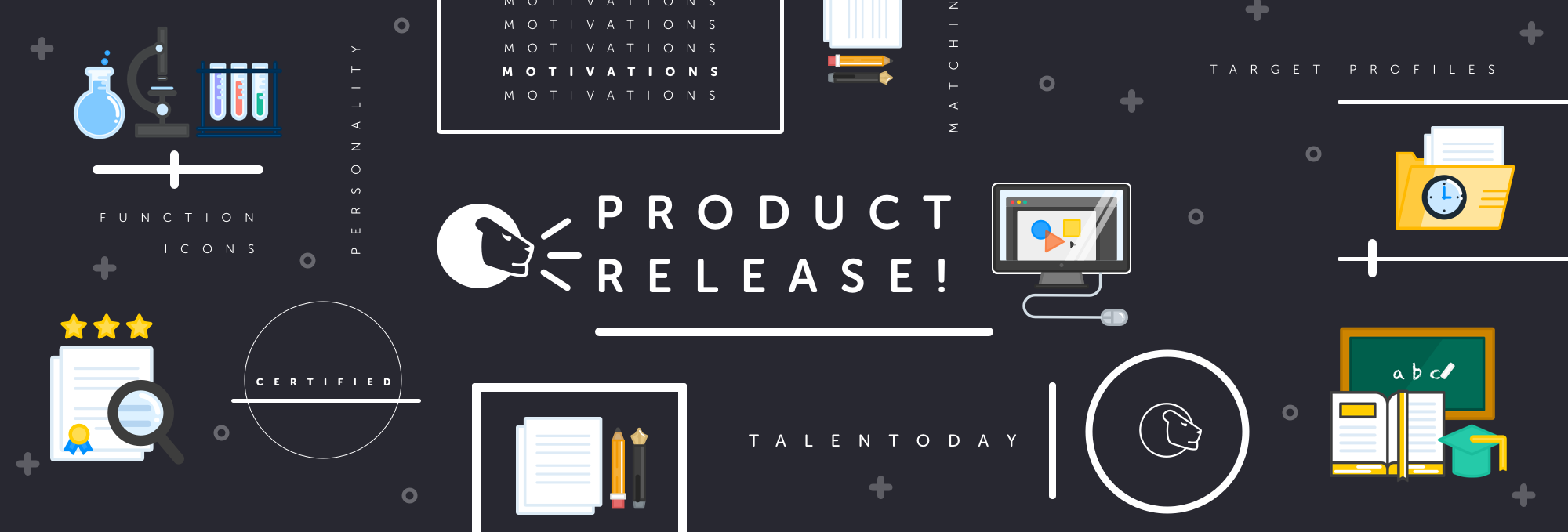
We’ve improved a few core features that we hope you’ll love. Our biggest updates are improved candidate communication, report file transfer, and Talentoday Analytics changes. Here are the headline features in the last month:
- TM analytics is now available for all Talentoday managers.
- Talentoday account owners can now see individual details by the manager to help monitor usage and results.
- Managers are now able to send a reminder email to all candidates who have not completed the personality assessment.
- Managers can now send the personality report directly on the platform.
- Lastly, we have now extended our Snapshot report to all users including those who do not have a Talentoday Manager account.
TM Analytics
Talentoday Analytics allows managers to monitor their usage on the Talentoday portal. Managers are able to easily keep track of the number of individuals they have assessed, the number requests they have sent out and the reports they have downloaded. This feature also includes analytics on the Target Profiles that managers have used and created to match people against a profile.
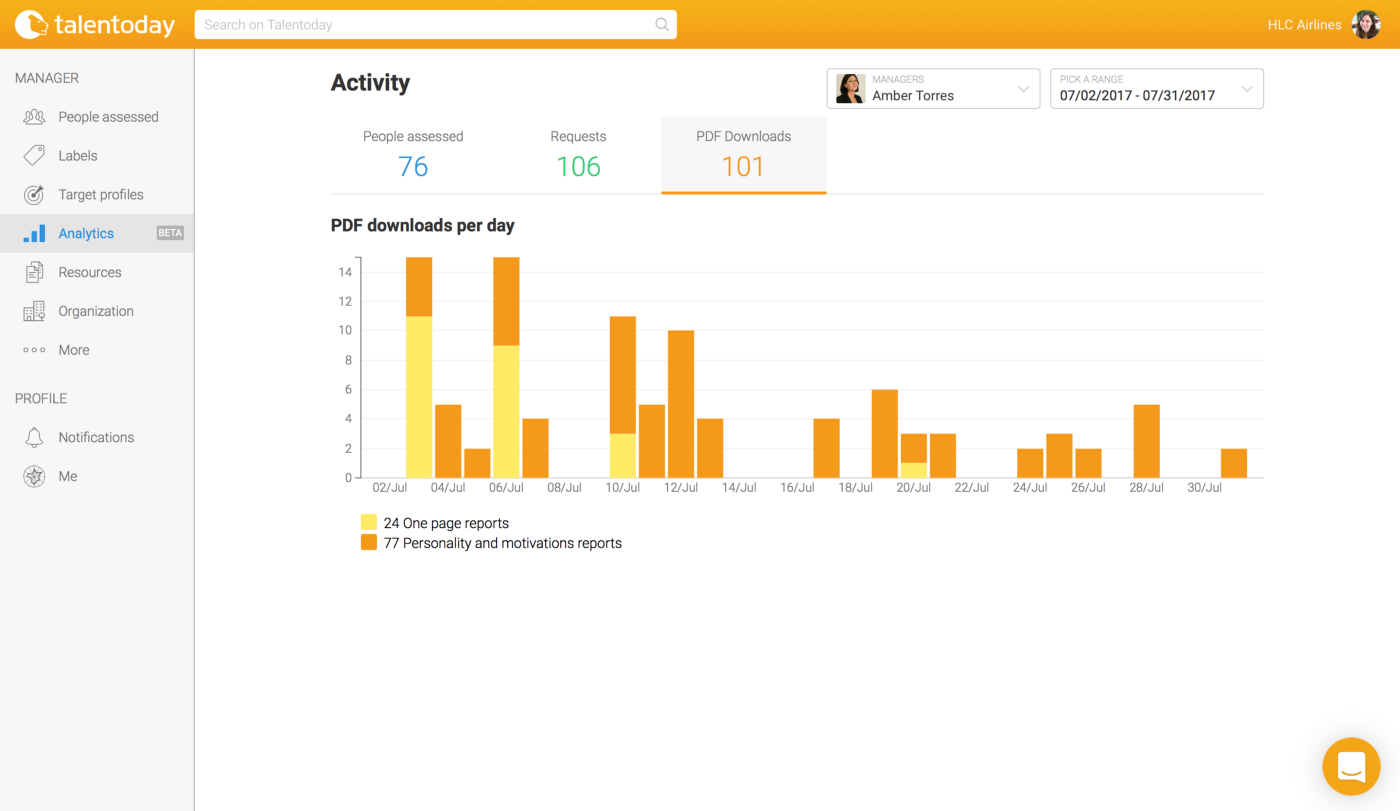
The owner of the Talentoday Manager account can also keep tabs on their other managers and see a break down of the requests being sent and the reports being downloaded by each manager. A number of other features are currently in the works and will be released in the coming months!
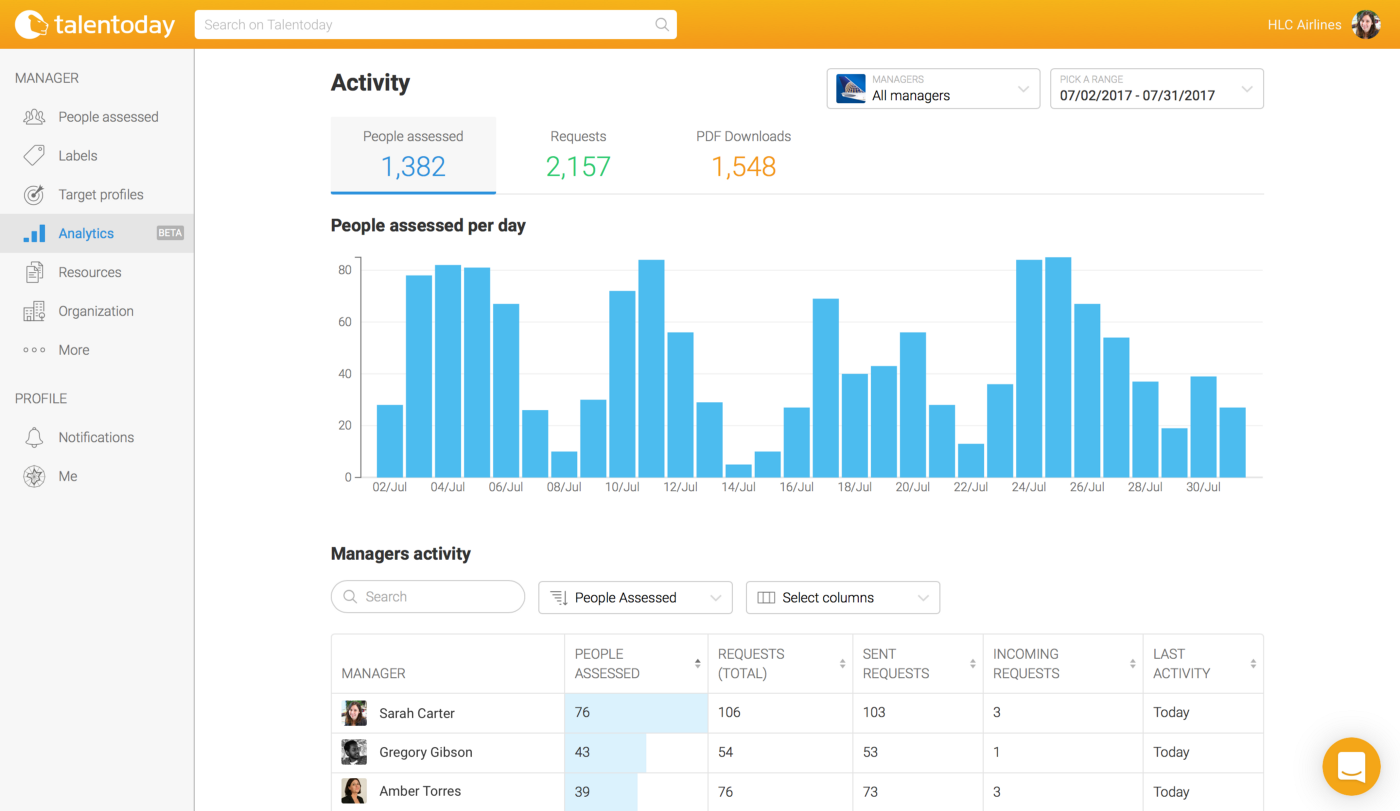
Candidate Communication
In order to save our managers time and improve communication between them and their candidates we have added a couple features to make life easier.
When managers send out a link for their candidates to take the test they expect a swift response. The last thing most busy managers want to do is keep track of who has taken the test and who has not. Talentoday does this automatically and now offers the ability to send a reminder email to the individuals who have not completed their test. This is a pre written email that can be sent and is automatically personalized with the click of a button.
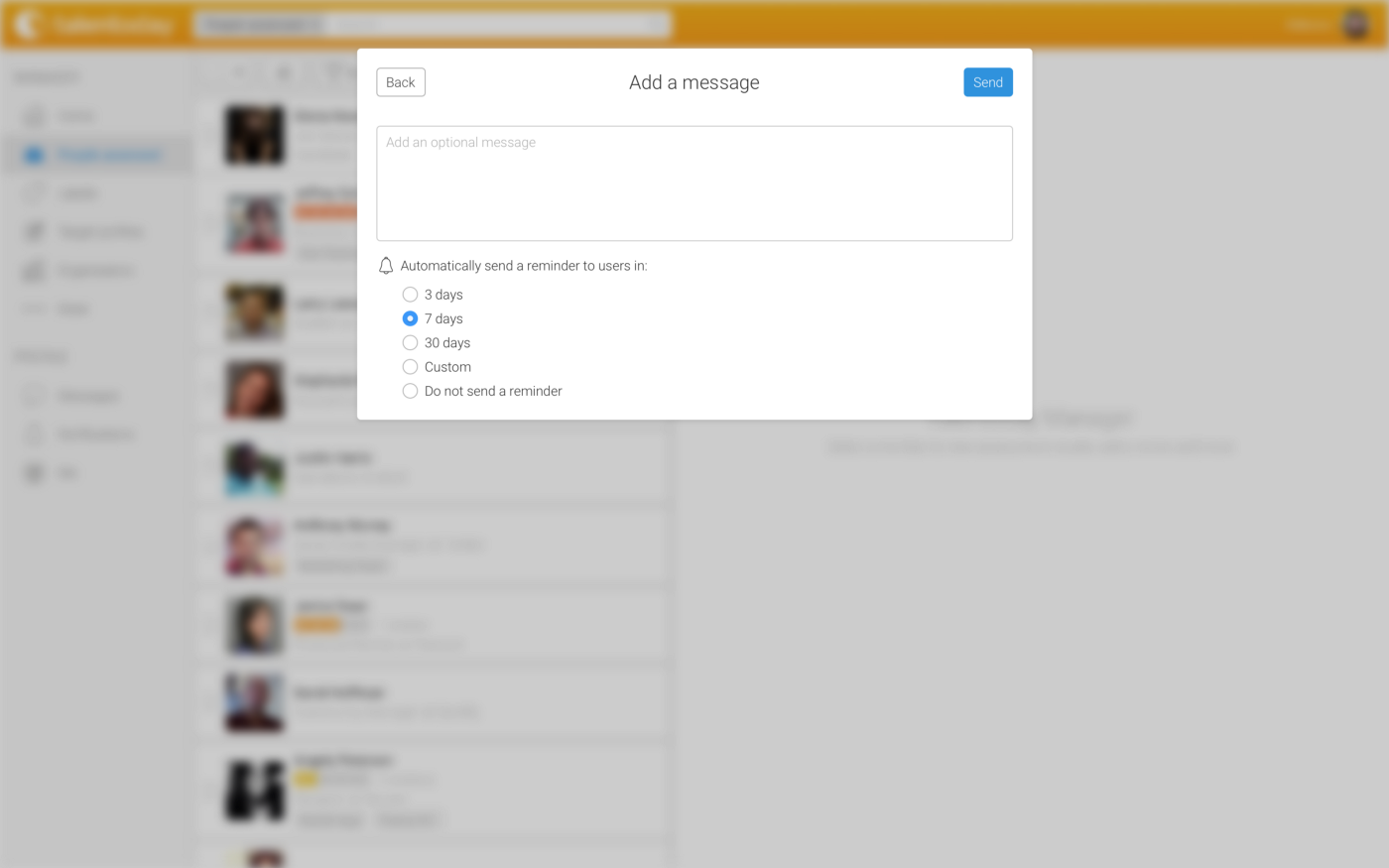
In response to customer feedback, we have also made it much easier for managers to send reports on the platform. In the past managers would have to download the report as a PDF before sending out to candidates. Now on the platform you can simply click send and an email will automatically be filled and sent to the individual.
Snapshot Report
A few months back we launched our new Snapshot report, a 1 page report on an individual’s talents, development areas, professional behaviors and motivations in the workplace. It was created to help recruiters and managers understand their candidates soft skills quickly so they can spend more time speaking with the right individuals.
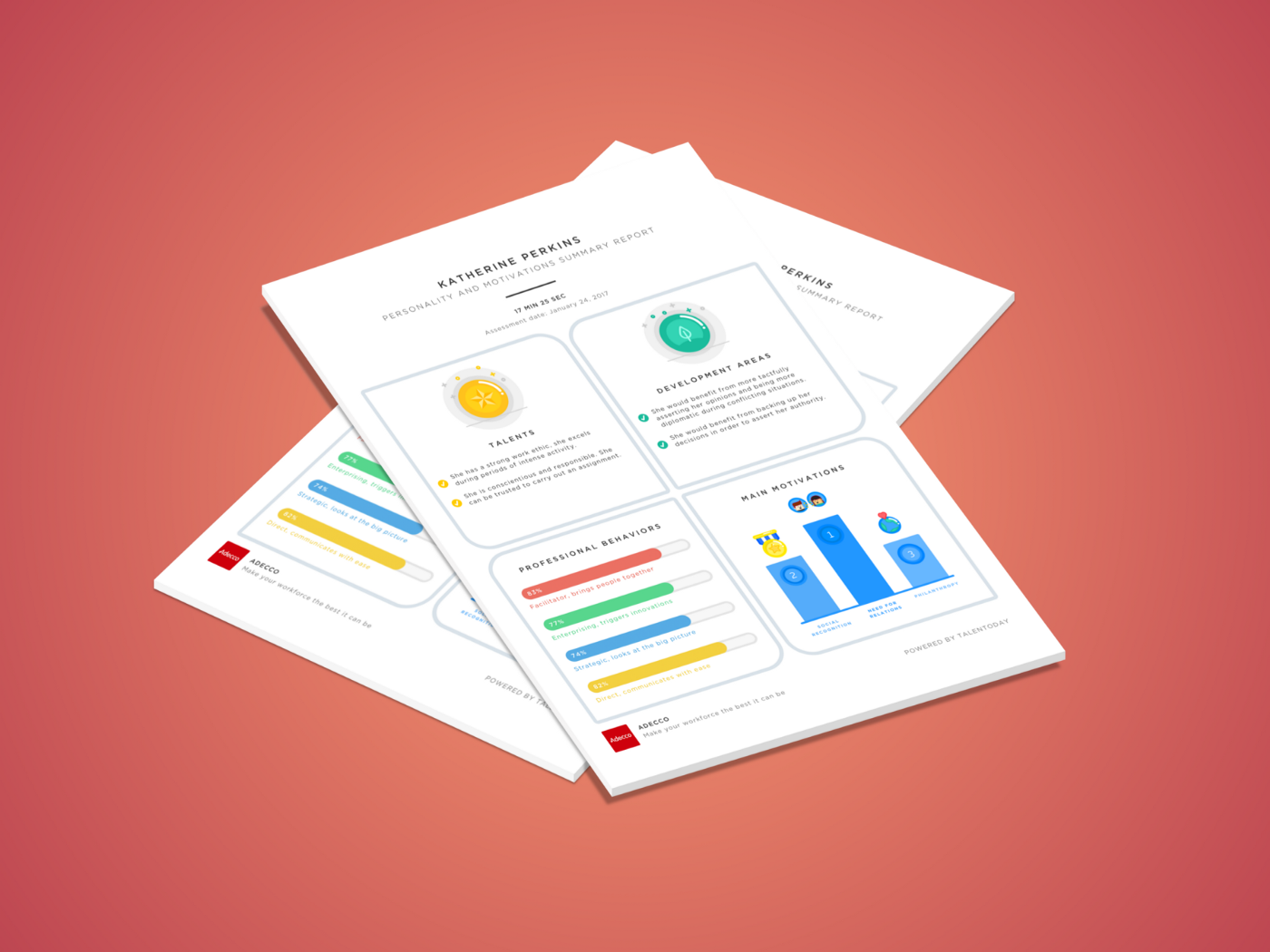
Although we have not changed the report itself, we have now made this available to all of our Talentoday users. Now when individuals take the test, they will have access to their personality radar & their snapshot report, for free.
For more information on other recent releases feel free to check out our blog. As always, your feedback is so important to us. If you wish to share and get in touch with us give us a shout out on social media!
The new Target Profile visualization

Talentoday has committed to its customers a digital platform that is current and dependable. In that spirit we would like to thank our 100+ customers for their loyalty and feedback over the past year. With input from our clients and hard work from our designers, psychologists and data scientists we are excited to announce our new visualization for the Target Profile. Here’s an overview of the headline updates:
- Analysis of the clusters is easier than ever due to the visual consistency between our personality and motivation radars with our Target Profile radar.
- Introduced a new color and increased contrast of the motivation cluster.
- Target Profile zones allow customers to easily draw conclusions about the results.
- Target Profile traits are now ranked by degree of importance. In other words, you now clearly know the most essential traits that contribute to a profile.
- To simplify the radar we have now made it standard to show 8 traits for a profile, no more, no less.
Visual consistency
Target Profiles empower our counselors and trained users to make the links between the personality reports and their decisions. We have changed the cluster colors displayed on the target profile to increase the visual consistency of all the radars we use at Talentoday. Why is this important? Our Target Profile technology matches personality & motivation radars against a profile from our library to create a Target Profile radar. The new visualization allows our clients to quickly analyze the results and make deductions from the data to make strong and confident decisions.
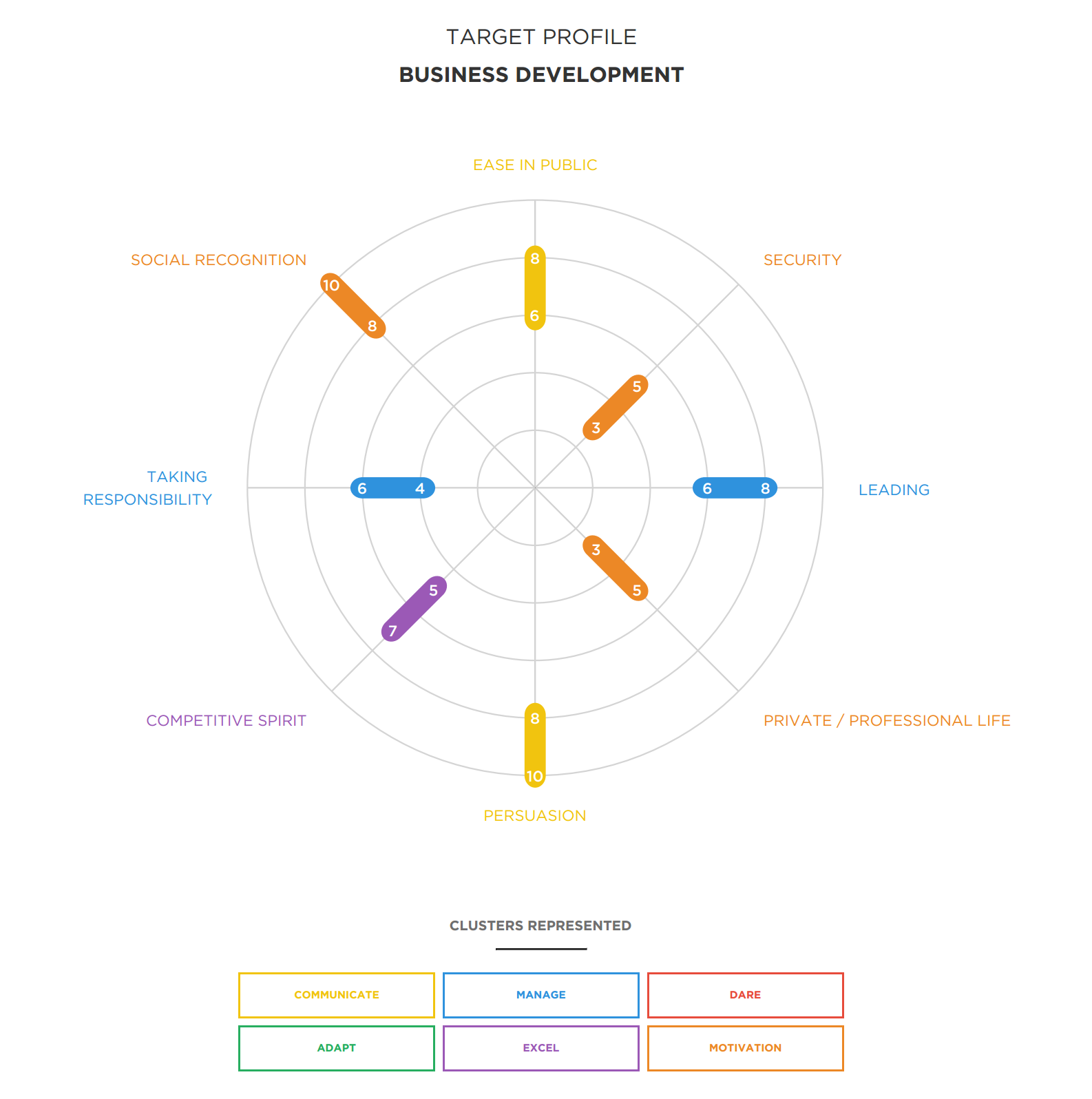
Increased contrast on Motivation Radar
We all know that keeping employees motivated is essential to fully functioning teams. This is one of the key features of our motivations radar and a big reason we have spent time on its look and feel. We have introduced the orange motivation color and increased contrast to ensure that our users do not confuse colors on the two radars.
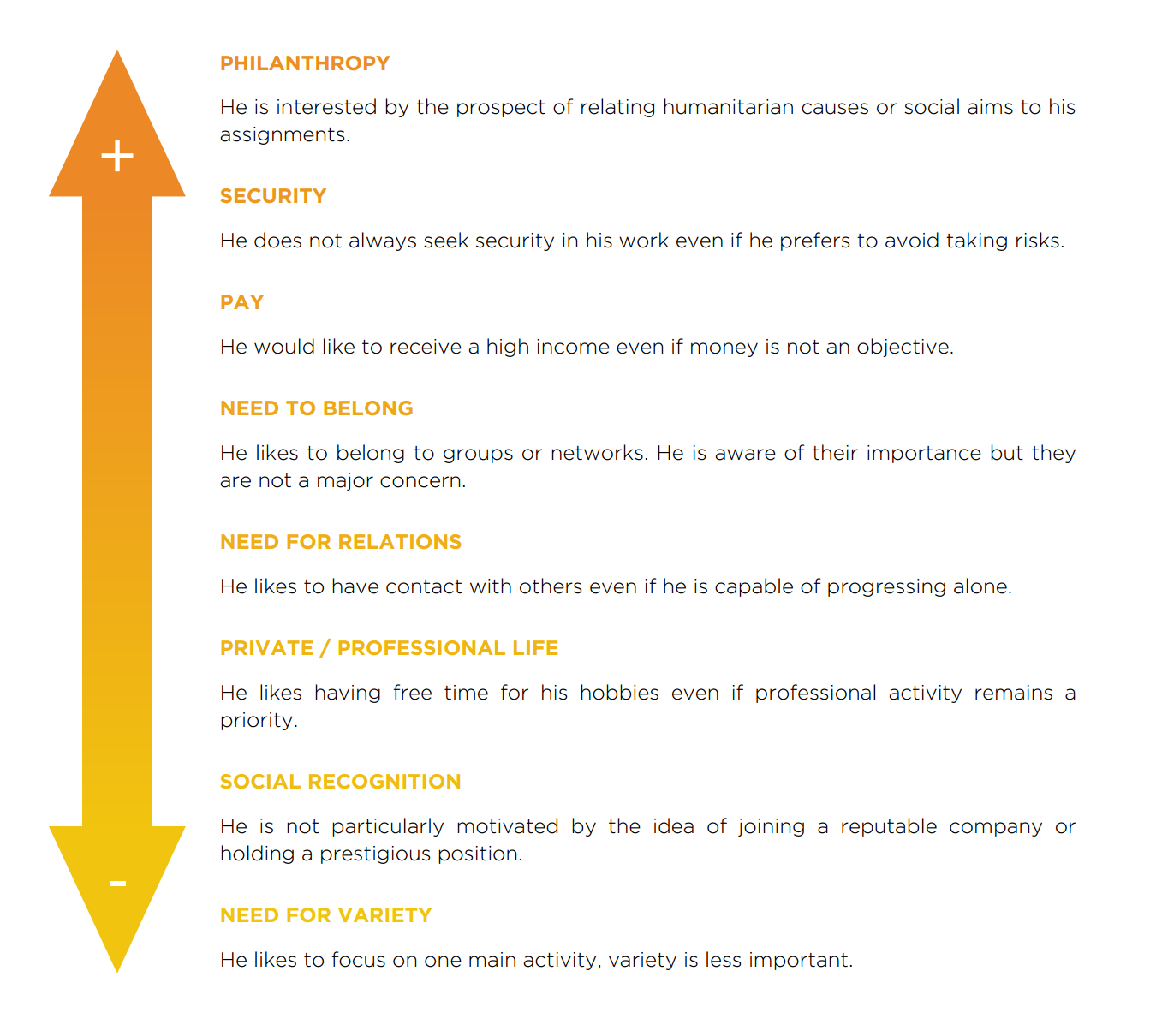
Introducing: Target Profile Zones
Take a look at the graph below. See that yellow thing there? That is a trait. This new look provides a clear way to analyze the data. This “zone” shows us that a specific trait for this Target Profile must score between 6 and 8 to be a good match. Clients use this visualization to understand if their candidates’ scores are falling within the zone of the trait. In conjunction with these zones we have included a legend and explanation at the beginning of Target Profile reports. Our clients are now fully equipped with the training they need to read and analyze the report.
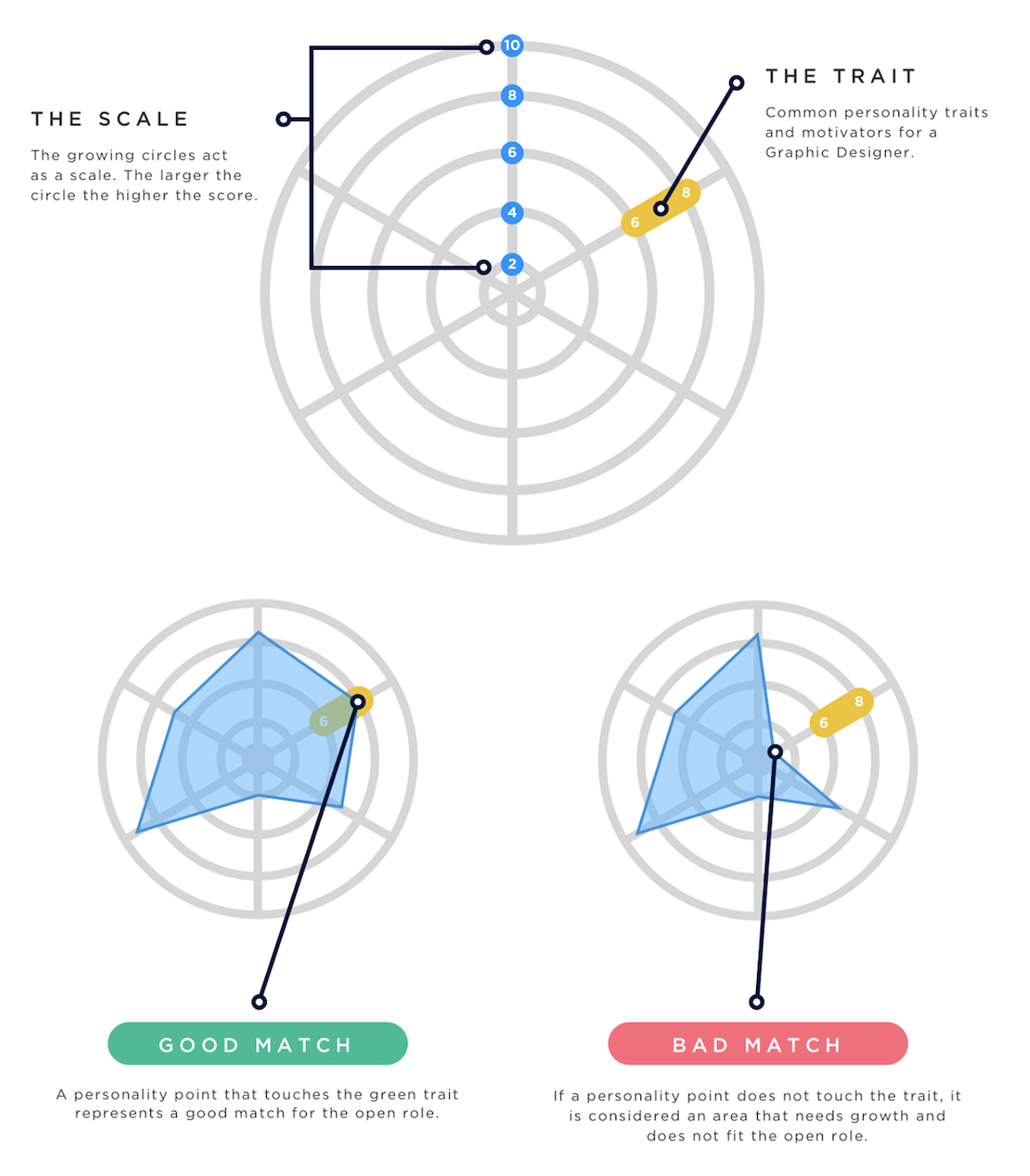
TP key traits are ranked by degree of importance
We have now added more information regarding ranking of important traits for each Target Profile. This new information helps you understand which traits are most relevant for a Target Profile. We emphasize the essential traits and motivators and list the additional traits we see as valuable for a given position. Customers are able to understand what is important within each profile and what traits to focus on while interviewing candidates for an open position or considering how to motivate/satisfy a current employee.
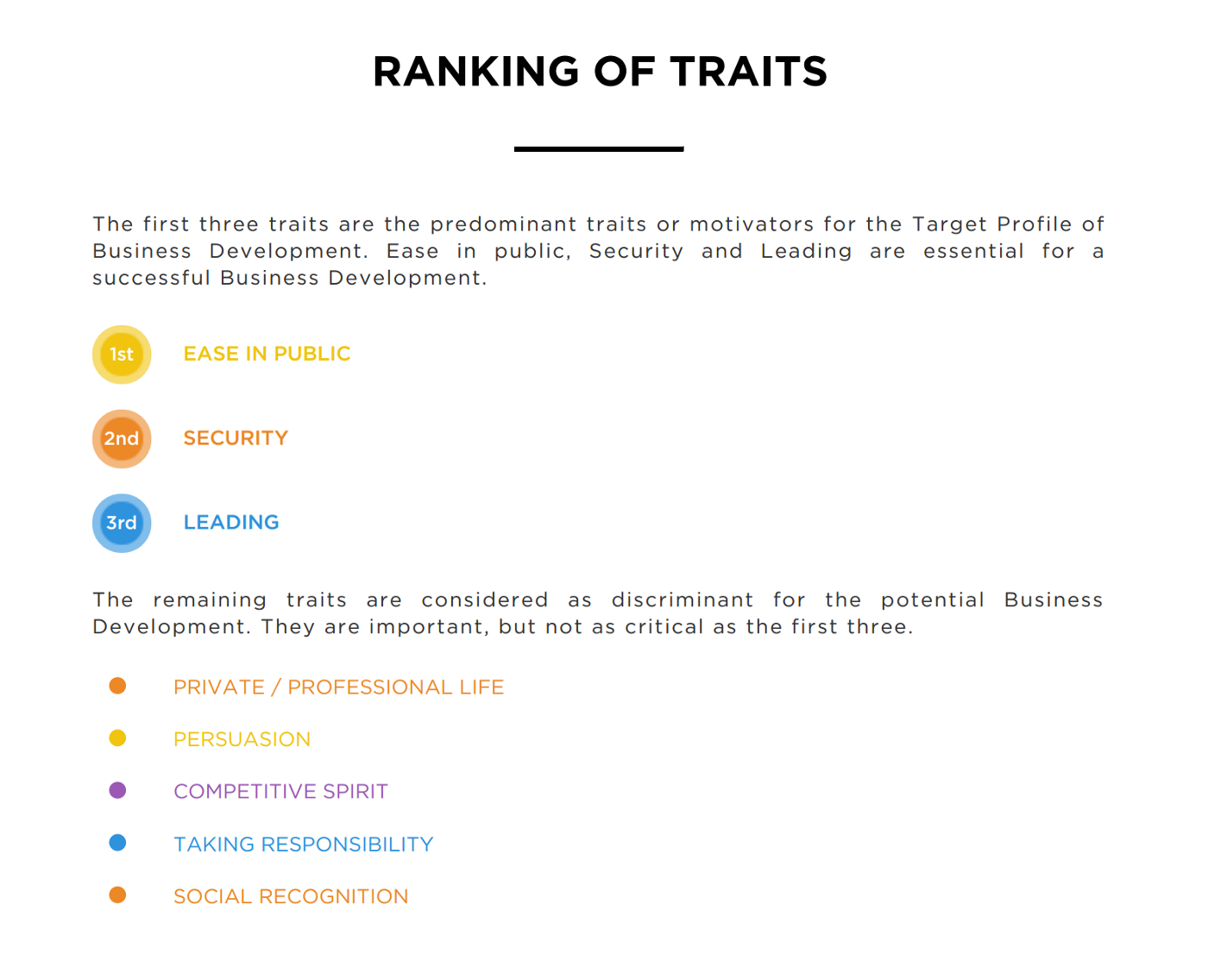
8 traits are displayed and ranked
Lastly, in order to standardize the Target Profile we now limit the number of traits shown in a Target Profile to 8. This allows for relevant comparisons between Target Profiles and makes drawing meaningful conclusions about candidates & employees quick and successful. Clusters are also ordered clockwise based on their accuracy. In the photo below, “CREATIVITY” is the most important zone, “EASE IN PUBLIC” the second most important, and so on.
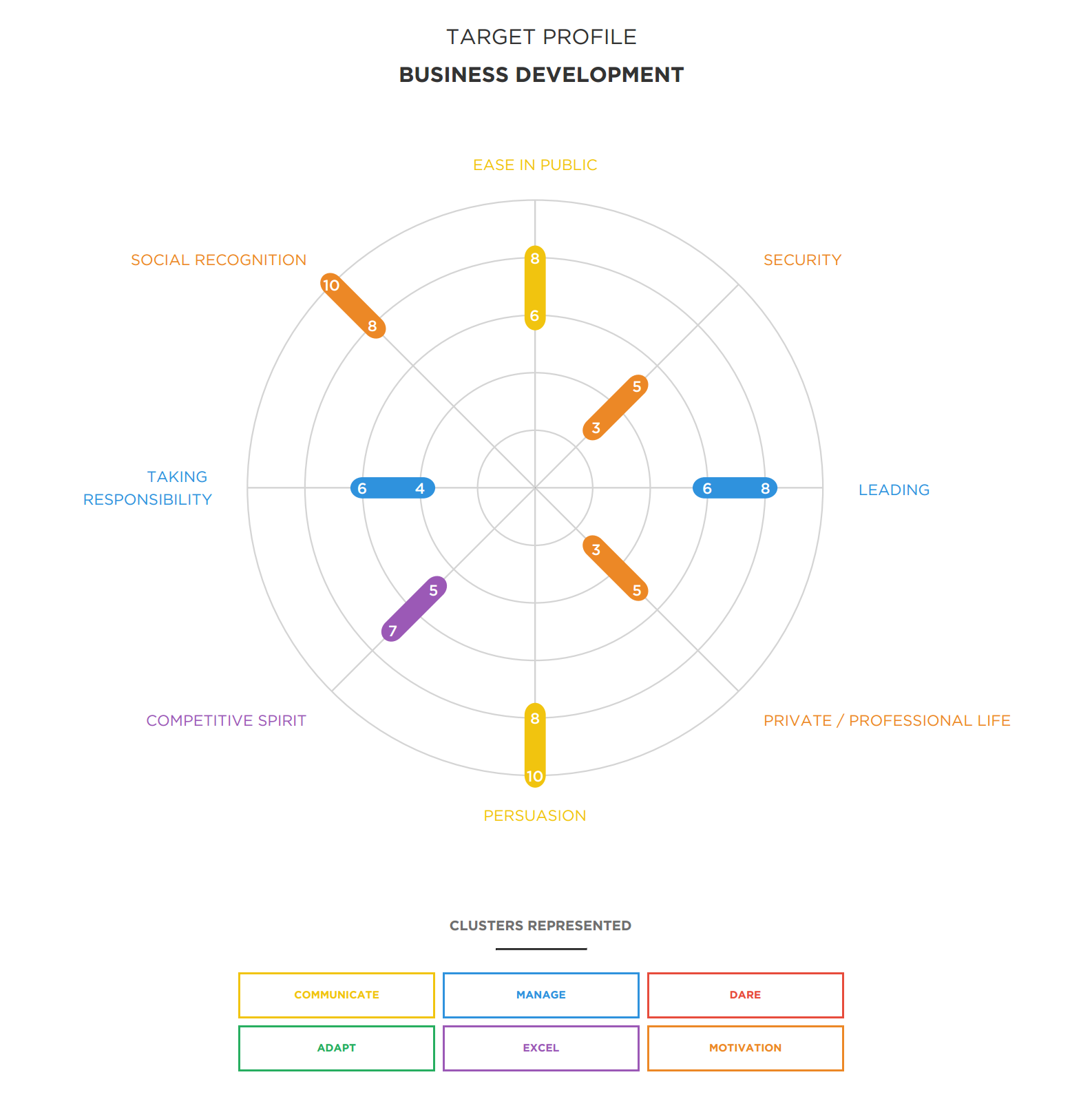
—
The Target Profile visualization is a free update for everyone with an active license. If you need to renew your license, you’ll get Talentoday Manager with this in addition to many updates we have released in recent months.
Do let us know what you think of this new visualization — we’d love to hear from you. If you have questions or feedback, you can get in touch with us via our support page or join in the conversation on Twitter, or on our Facebook page.
Stay tuned for news about V2 of the Target Profile Visualization— we’re already working hard on it!
Put more money in your wallet $$
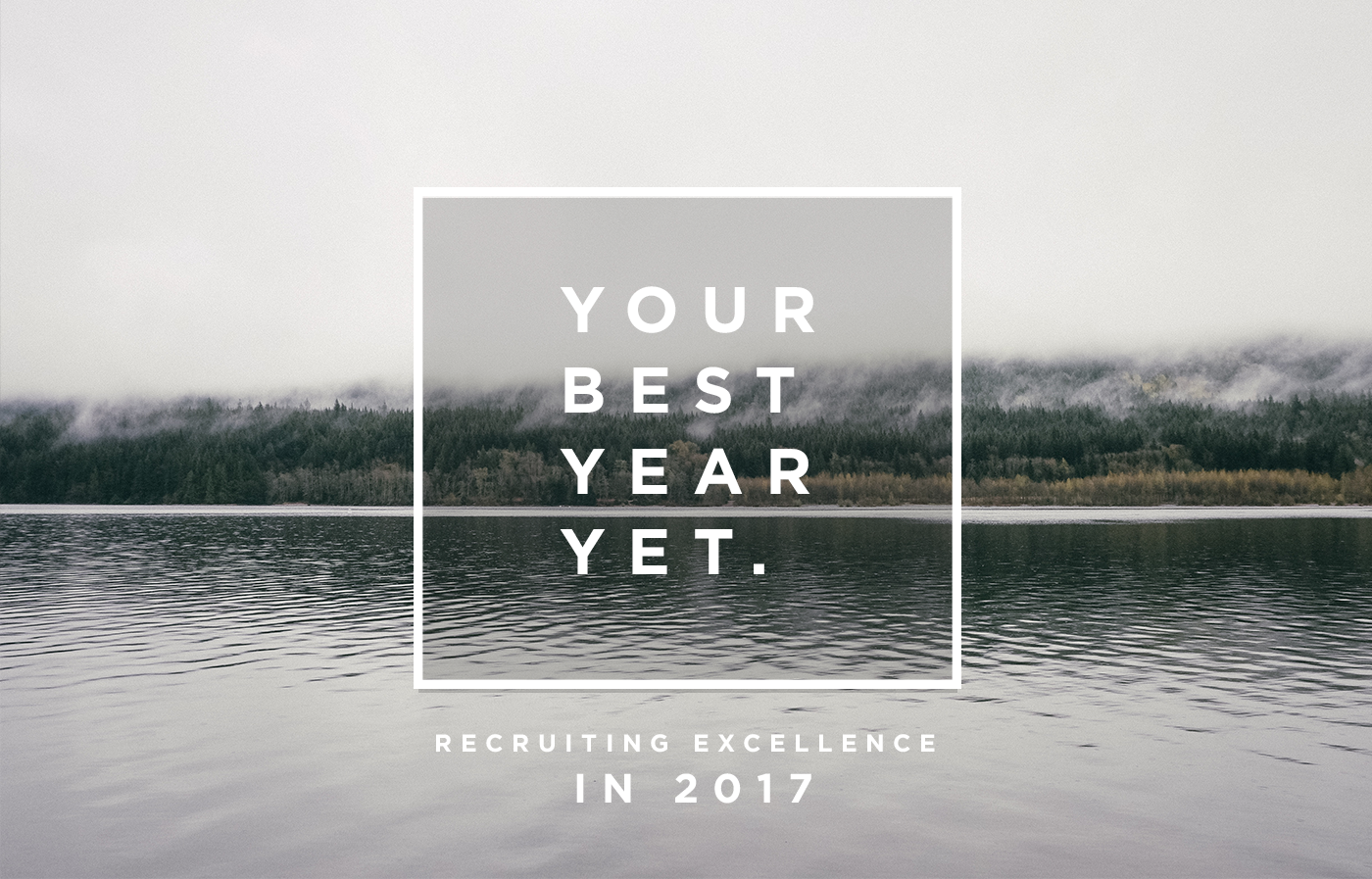
How to Narrow the Qualified Candidate Pool and Increase Millennial Retention Rates
There are two simple ways to increase your commission as a recruiter. One, place more candidates. Two, increase candidate retention rates. While you may have heard these before, what you have not heard are the following secrets to actually put the money in your wallet. So, let’s dig in.
Place more candidates by talking to less of them.
I know what you’re thinking, there is only so much time in the day, so placing more candidates seems impossible with the workload you’re already carrying with your current volume of candidates. The biggest issue with recruiting productivity is that we are talking to far too many candidates on a surface level. A study done by Deloitte on US spending in recruiting stated it takes an average of 52 days to fill an open position, up from 48 days in 2011. The issue we are facing is that hundreds of qualified candidates are applying to several jobs with a few clicks from their laptops at home. On average, each corporate job opening attracts 250 resumes. Of these candidates, four to six will be called for an interview and only one will be offered the job.
The way that candidates automate their job hunt with job databases is matched with a lack of automation on the recruiting side — hence the backup. It’s no surprise that 90% of recruiters say the market is candidate-driven in 2015, up from 54% in the second half of 2011.
It’s easy enough to talk to less candidates, but the fears arise — how do I know if I’m leaving a qualified candidate behind? How do I get a read on candidate soft skills without some sort of interview? Would you believe me if I told you these processes are becoming automated? Companies such as Talentoday, a people analytics solution, provide an automated personality test that is backed by data science and psychology to help you weed through your pile of 250+ candidate applications. They provide you with a job fit percentage that helps you quickly determine which candidates are most compatible with the job you are seeking to fill based on soft skills. Go ahead and re-read that, I did indeed say soft skills!
They do this with their speedy yet effective personality test. It will drastically narrow your candidate pool by comparing candidates against a job profile that you create online. Quality time with fewer qualified candidates means dollar signs on your end.
Finally, something to even the playing field for recruiters in response to the surge of applicants! So what to do with all this extra time… well, you can finally get back to talking to the people who are truly interested and equipped for the position. Another important plus is you now have room to take a extra time to coach your candidates into retention, because nothing is worse than doing all of the work to get someone in the job to find out they left and see that commission refunded.
Increase retention by coaching your millennial candidates on how to ask for what they want.
If you aren’t already, you are bound to be working with a majority of millennials and this generation has no problem leaving jobs, unlike their baby boomer parents. Most Baby Boomers (41%) said workers should stay with an employer at least five years before looking for a new job — only 13% of Millennials agreed.
So let’s get to know our millennial audience and what they want. Here are a few facts from Glassdoor:
- Nearly 80% of Millennials look for people and culture fit with employers, followed by career potential. (Collegefeed, March 2014)
- 64% of Millennials would rather make $40K a year at a job they love, than $100K a year at a job they think is boring. (The Columbus Dispatch, Study Conducted by the Intelligence Group, 2014)
- 46% of Millennials left their last job due to lack of career growth. (Glassdoor survey, March 2013)
What is the theme here? POTENTIAL and GROWTH! Millennials are young and starry-eyed. They think they can have their dream career and they will keep moving until they are happy.
So how do we get them to stay? The first step is understanding how they are motivated. If you end up using a tool like Talentoday they provide you with a complete motivations radar that will give you an inside look on what makes your candidate tick. You can then encourage your millennial candidates to have conversations with their managers about growth within the company.
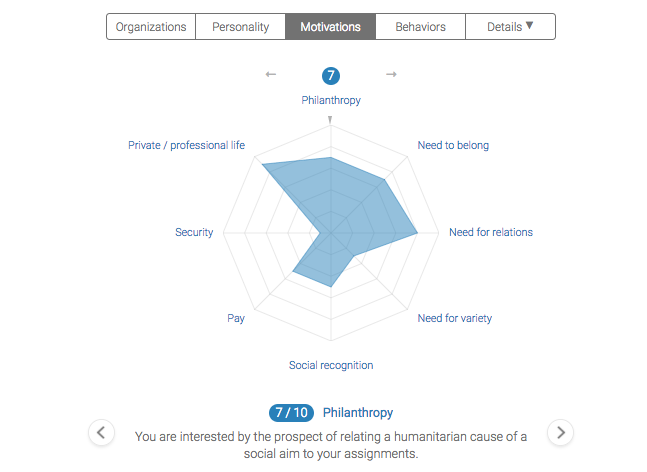
Tell them that instead of “peacing-out” of the job because they are bored or unhappy, to ask for things that keep them motivate them to come into work in the morning. Drive home that candidates should not be afraid to ask for what they want in the job they are in whether that be pay, flex time off or the ability to work from home. Not only will they possibly stay longer at their job, but they will love you as their recruiter for giving them some much needed career success advice!
Curious to find out if your candidates have what it takes? Start your free trial today and test your candidates quickly & effectively for free!
Let’s face it, recruiting can be difficult. Let us help. Check out our other posts about hiring trends, tips and tricks.
Magical Beasts and how to hire them.

Hiring for your start up? Become a hiring wizard with this free webinar and these recruiting tips.
If you are an entrepreneur you want nothing short of mystical candidates. Individuals that make something out of nothing and can conjure a lead out of thin air. Whether your company has been around for one month or one hundred years, when you’re expanding into a new market, you have to hire with a start-up mentality. Hiring is an incredible opportunity, but it’s also a risk. As a start-up, you have fewer resources, so if a new hire doesn’t work out, it causes significant burden to the rest of the team. And if you’re managing a new team from a distance, the stakes are even higher. No pressure, but who you hire can make or break your start-up’s success!
If you want to learn all the ins and outs of recruiting for small companies and large companies alike tune into our free webinar on December 14th. Not only will you leave with valuable knowledge on how to assess your candidates soft skills & hard skills but we will also delve into the interview process and how to detect what is beyond the curtain. A professional recruiter give you her insights and you will leave with the tools to play psychologist and truly choose a candidate for the long haul.
But wait there is more..
In the mean time, lets discuss the traits you should look for in a candidate so you can land the perfect person for your company.
Interviewing is obviously the biggest tool recruiters currently use to find the right fit for a team. Interviewing candidates is an art, both from the interviewer and the interviewee standpoints. Some candidates are great at selling themselves, others more reserved. It could be they grew up in a culture where self-promotion was considered a vice, not a virtue, and not indicative of how well they’d perform in a role. Some recruiters are better than others at bringing out the best in candidates in a conversation.
So how do you know if a candidate will fly or flounder in your company’s entrepreneurial culture? Look for these traits:
- Accountability: Determine how the candidate owns his or her work. Notice if he or she answers questions with “I” or “We”. It’s imperative in a start-up that employees take full responsibility for their roles, tasks and actions.
- Self-motivation: In a start-up you don’t have as much time for rah-rah speeches and trying to light a fire under your team. You need an employee who has an intrinsic desire to work hard and perform well.
- Flexibility: One day the goal might be sales, the next traffic. Mission statements and organization charts evolve quickly. To succeed in a start-up, one must be able to adapt to change.
- Skill/Education: Certainly, having the right skills and education for a role brings results. The closer a candidate matches the expertise you need the less time they’ll need to be trained.
- Passion: Believing in the mission of your company and having a passion for the work you’re doing is key for start-up company employees. It’s what will keep them going in the middle of the night before a big launch.
- Resourceful: An ideal start-up employee knows how to solve problems, often with little resources. Like business Macgyvers, they can make big things happen with Excel and a couple of paper clips.
You don’t have to rely on hours of subjective interviews to figure out if your candidate is “the one.” Identifying a candidate’s personality traits objectively can be done using a people analytics tool like the Talentoday Manager. Here’s an example profile of a real person who is currently successful at a start-up. As you can see, with one glance you can identify areas of strength to match the profile you need.
Talentoday further identifies her as a great start-up candidate with these insights:
Creativity 8 / 10: She likes to be innovative and find original solutions. She is not very conventional.
Stress Management 8 / 10: She finds it easy to keep her cool in stressful situations. She performs well under pressure.
Motivations — Security 1 / 10: She does not need security in her work; she likes to take risks.
Motivation — Need for Relations 9 / 10: She is motivated by teamwork and relations with others are very important.
The most important asset a start-up has is its people. When reviewing your candidates, identifying their personality traits is even more important than evaluating their skills. With the right personality traits, an employee can gain experience and move up the ladder, developing into exactly the long-term magical beast you always dreamed of.
Curious to find out if your candidates have what it takes? Start your free trial today and test your candidate quickly & effectively for free!
Let’s face it, recruiting can be difficult. Let us help.
Join our free webinar to get in on the secrets of hiring for your start up
How to Build Team Effectiveness: Bringing Balance by Empowering Management
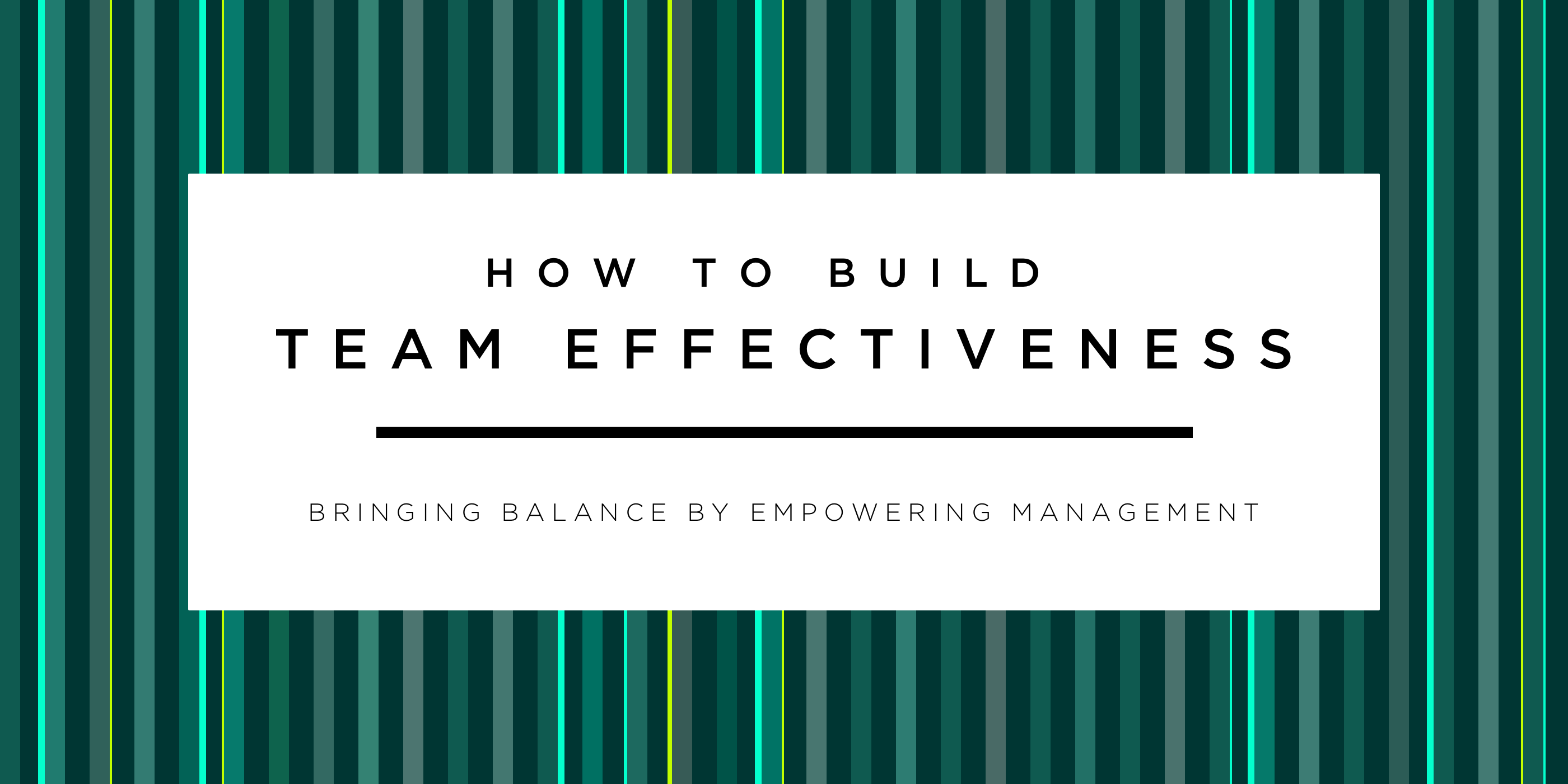
Last week I touched upon the importance of individual self-awareness for team effectiveness in Part 1 of this series, How to Build Team Effectiveness: It starts with the Individual. Today I will shift my attention to leadership within the team, and what managers should strive for when creating a balanced team.
I decided to interview a long-time successful leader, Gino Blefari, CEO of Berkshire Hathaway HomeServices. With 30 years of management experience under his belt and numerous awards in leadership and mentorship, I knew he would have a few nuggets on team effectiveness.
Gino first said that a key to his success in inspiring teams is that he is constantly learning. He is always picking up books and learning new techniques from authors new and old. The books he reads are not just business books, some are fictional novels, others autobiographies, all in which he is able to prune out important takeaways.
When I asked him what makes up a good team he got excited, telling me he had just read The Boys in the Boat, a feel-good story about superstar rowers on a quest to achieve Olympic victory. He said not only was the story incredibly inspirational, but weaved in the keys to a successful team that are applicable to every industry and profession.
“Crew races are not won by clones. They are won by crews, and great crews are carefully balanced blends of both physical abilities and personality types … And capitalizing on diversity is perhaps even more important when it comes to the characters of oarsmen. Good crews are good blends of personalities; someone to lead the charge, someone to hold something in reserve; someone to pick a fight, someone to make peace; someone to think things through, someone to charge ahead without thinking. Somehow all this must mesh. That’s the steepest challenge.”
It goes without saying that every team is different. What makes a team dynamic and productive is having variety. Building on the knowledge of an individual’s skill set, managers can harness their unique skills to build teams with balance. A smart manager knows what to look for but often has little time. Gino & I discussed that his busy schedule has pushed him to make every minute count.
As a manager, it is your job to create an environment that fosters this idea of synergy. Synergy is defined as the interaction or cooperation of two or more individuals to produce a combined effect greater than the sum of their separate effects. When I asked Gino how he achieves this with his teams, he was ready with an answer,
“The closer the team is together, the better the team will perform together. When individuals become accountable to their teammates, that’s when productivity grows exponentially.”
Every time someone new joins his team they are assigned an accountability partner. You are responsible for talking to your partner every day, whether it is a call or an in person meeting. The goal of the call is to get to know your teammate as an individual, aside from work. In a dream world this would happen with every new hire across all companies. But time and expansion can cause managers to cut corners when getting to know their teammates, throwing a wrench in that whole “synergy” thing.
So how can we stay in tune with our employees changing needs especially when we are pressed for time? One option might rely on technology. For instance, Talentoday, a people analytics platform and soft skills personality assessment, allows a manager to become the psychologist who can artfully concoct the perfect blend of personalities to create an effective team.
Similar to Gino’s “accountability partner” idea, Talentoday’s Premium Development Report allows you get an in depth analysis of an individual’s personality traits and motivators in the work place. Everyone is unique and we all have different drives that get us out of bed in the morning. As a manager, having these insights in your back pocket would no doubt give you the information you need to keep your employees engaged.
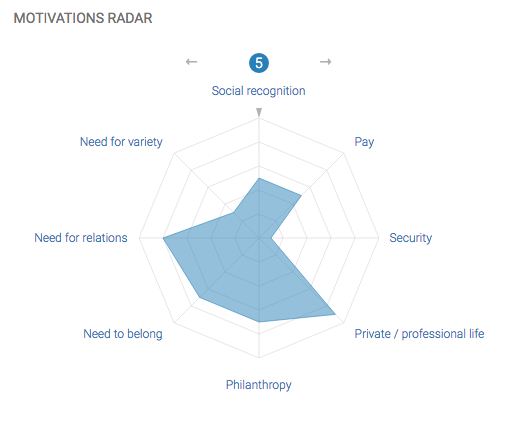
But this idea of getting to know your employee both personally and professionally only works if you have hired the right individual in the first place. Which brings me to my final thought; fostering team effectiveness begins with recruiting the right people. Next week we will take a look at the recruiting process and the important combination of data and intuition when selecting people to join your team.
Curious to find out your professional traits? Check out our page to take your free personality assessment today. And if you like this post, please hit the ❤️ button below or give me a shout on Twitter.
HR Managers are Redefining Merit to Justify Discrimination

Studies show that gender and culturally diverse companies are more successful. This report from McKinsey found that businesses that are gender diverse are 15% more likely to financially outperform homogenous companies, and businesses that are ethnically diverse are 35% more likely to outperform less diverse ones.
Yet, according to this study by Yale researchers, decision makers may downplay the importance of a female applicant’s areas of expertise and inflate the importance of her areas of weakness. Alternatively, decision makers may view the credentials of a specific male applicant as essential to job success and view his areas of weakness as nonessential.
Many companies are trying to improve diversity, or at least claiming they are. Earlier this year, Airbnb announced they assembled a team of civil rights leaders (including the former Attorney General Eric Holder) to review and update the company’s anti-discrimination policies. “I want us to be smart and innovative and to create new tools to prevent discrimination and bias that can be shared…” said co-founder Brian Chesky in this blog post.
Blogger Erica Jones candidly discussed her own experience being the sole black woman on various IT teams, encountering racial bias’ both blatant (degrading comments by coworkers) and clandestine (the company hiring out on a project Jones was the most qualified to do). Jones said,
“I am a black woman who happens to work in the tech industry. I don’t need to change to fit within my industry. My industry needs to change to make everyone feel included and accepted.”
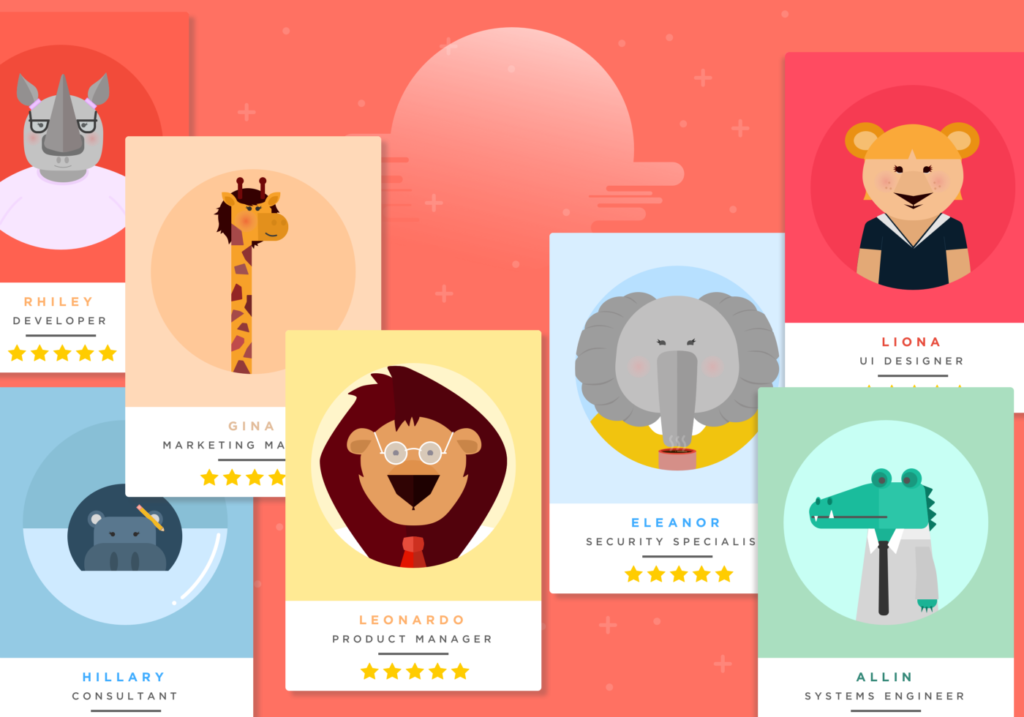
Some companies are making progress on gender diversity. Fortune recently reported that food-delivery company Grubhub has seen success with 50% of its executives being women, 43% of its workforce, and 23% of its engineers (10% more than U.S. average).
Recruiting talent from a larger pool of backgrounds lends itself to a more balanced team. One can see how, in this analysis by Talentoday who reviewed real personality comparisons by country:
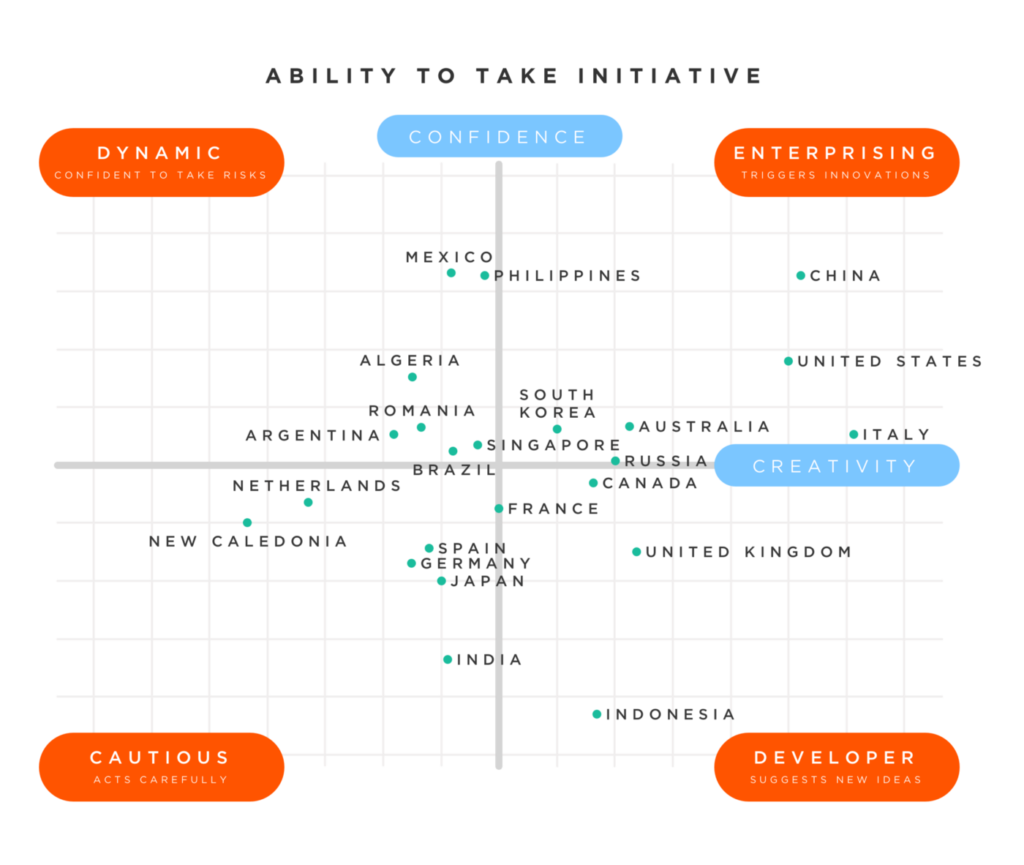
Having a team of dynamic, cautious, enterprising and developer mindsets is ideal — for balanced idea generation and execution. The enterprising person inspires the developer, the dynamic person’s boldness is balanced by the cautious. As the graph above shows, if one only hires people from the U.S. it can be harder to obtain such a diverse team.
Avoiding discrimination bias and fostering a culturally and gender diverse team begins with the hiring manager. Companies who try to do diversity well often make the mistake of casting a wide net initially, but bias’ show up in the final selection. Hiring managers shouldn’t focus on people that are most similar to him or her, but rather aim for as wide of a range of a group as possible. The real problem lies in the bias of the final selection from recruiters and hiring managers.
Disrupting the Bias
One way managers can minimize their bias may be by evaluating the skills of candidates using a personality assessment tool. This gives managers and recruiters an objective way to look at a persons soft skills to create a team that works best together.
But not all tools are created equal. As Nanette Byrnes wrote in this piece on Technology Review,
“the danger remains that unrecognized bias, just in the programming of an algorithm but even in the data flowing into it, could inadvertently turn any program into a discriminator.”
Algorithms must be specifically tailored to minimize the bias, like objective data found in the Talentoday manager that helps reduce the bias of decision makers. Talentoday takes a look at the motivations and personality traits needed to succeed at a given job. Managers can assess their candidates and match the personality results to the industry standard to find the right fit, scientifically.
Another company has taken a different approach. GapJumpers has reworked the hiring process to include blind interviews modeled after the hit TV series The Voice. Cofounder and CEO, Kedar Iyer, states,
“If one industry, especially a shallow one like the music industry, can do [blind auditions], why can’t tech companies, which are so much more scientific, do them?”
GapJumpers found that male applicants raised concerns about having to prove themselves in a blind test more often than women. Once the blind challenge was completed, the gender breakdown of those candidates hired was 58% women, 42% men.
At the end of the day, in order to interrupt the process of judgment the focus must be shifted to evidence and away from perception. We may be a long way from changing human conditioning but companies can adapt with tools to make the hiring playing field less biased.
Check out our page to send our free personality assessment to your potential new hires today. And if you like this post, please hit the ❤️ button below or give me a shout on Twitter.
How to hire a world class developer

Just like relationships, hiring is a two-way street. As a hiring manager, not only do you need to find the right fit for the position, but you need to make sure the right fit wants to join your team.
What makes a successful software engineer?
We have surveyed thousands of software engineers and have found that universally developers are motivated by both pay and social recognition. But first, let’s look at what traits to look for in your next engineer. According to the Talentoday Software Engineer Target Profile there are three stand-out personality traits developers have in common: ambition, independent mind and creativity.
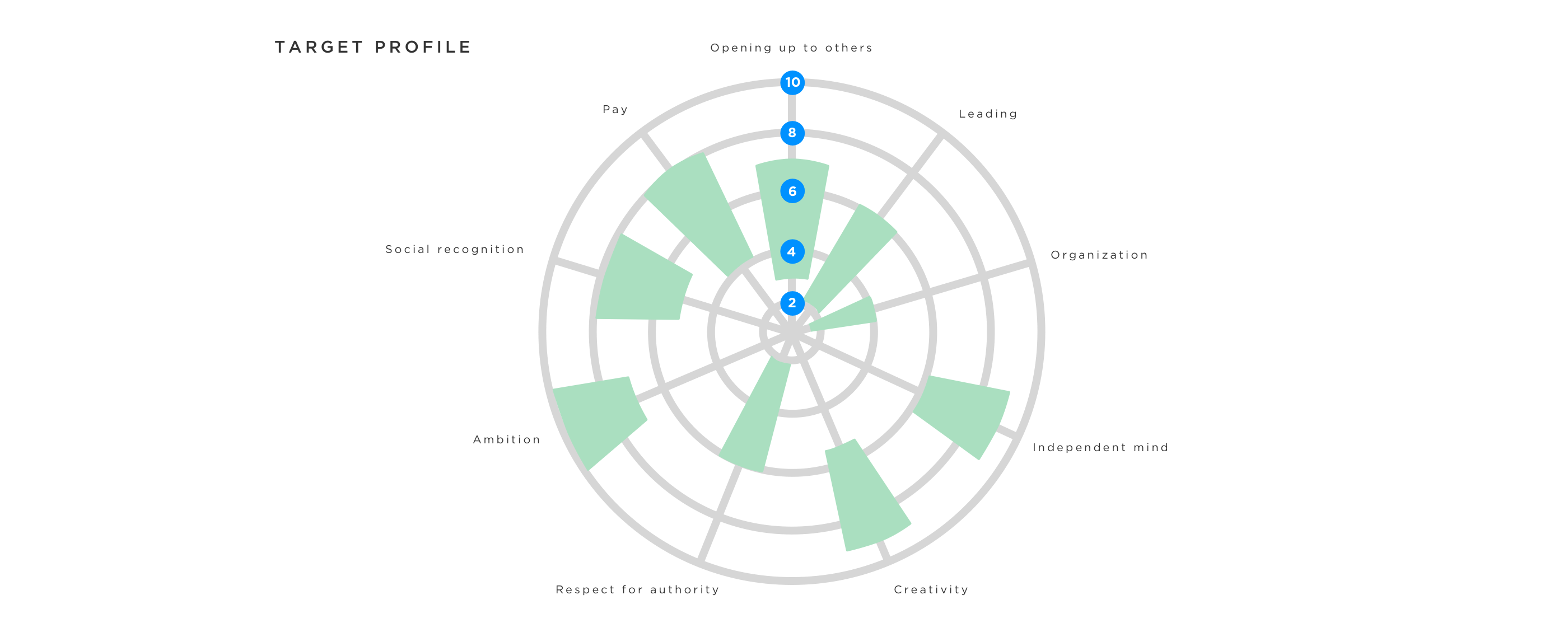
Ambition
As the cliche goes, “shoot for the moon, if you miss, you’ll land amongst the stars”. By far, the most important quality to look for in your next software engineer is high ambition. As recruiters, we tend to look at the past. “What did you do?, How successful was it?” It is important however, to also pay close attention to future goals and motivation of your next developer. Software engineers are constantly innovating and creating new content. Be certain they are excited to strategize and problem solve for your company.
Creativity
Your best software engineer is an expert at innovation. They think outside of the box and don’t necessarily go by the books. How can you know if your engineer is creative? Ask them! For example…”Tell me about a time where you tried to solve a problem in an unconventional way. How did it work out for you?” Remember, it’s not so much about the result of their actions as their attitude towards creativity.
Independent Mind
Whatever you do, don’t hire the software engineer who needs to be micromanaged. You want a leader. Someone that has a clear vision for the next steps for the company and who can problem-solve. Inquire about what role he or she played on their last team and how the dynamic was.
A note on how to motivate your new engineer.
Stand out amongst other companies with your job offer Believe it or not, most software engineers generally want the same thing: social recognition and pay. So instead of wasting your time on benefits and time off, you may seal the deal with a simple bonus and fancy title. Yep, it’s as simple as that. Now go out there and get your next best software engineer!
Curious to see if your candidates have what it takes? Check out our page to send our free personality assessment to your potential new hires today. And if you like this post, please hit the ❤️ button below or give me a shout on Twitter.
6 Qualities Every Start-Up Employee Should Have

Is your start up hiring? Make sure you do your homework.
Whether your company has been around for one month or one hundred years, when you’re expanding into a new market, you have to hire with a start-up mentality. Hiring is an incredible opportunity, but it’s also a risk. As a start-up, you have fewer resources, so if a new hire doesn’t work out, it causes significant burden to the rest of the team. And if you’re managing a new team from a distance, the stakes are even higher. No pressure, but who you hire can make or break your start-up’s success!
Start-ups have a unique dynamic, and not everyone is well suited for it. It might be enticing to hire a seasoned professional from a big name company, but be careful. They may experience culture shock when they don’t have as many resources or a large team to take care of tasks for them.
Interviewing is obviously the biggest tool recruiters currently use to find the right fit for a team. Interviewing candidates is an art, both from the interviewer and the interviewee standpoints. Some candidates are great at selling themselves, others more reserved. It could be they grew up in a culture where self-promotion was considered a vice, not a virtue, and not indicative of how well they’d perform in a role. Some recruiters are better than others at bringing out the best in candidates in a conversation.
So how do you know if a candidate will fly or flounder in your company’s entrepreneurial culture? Look for these traits:
- Accountability: Determine how the candidate owns his or her work. Notice if he or she answers questions with “I” or “We”. It’s imperative in a start-up that employees take full responsibility for their roles, tasks and actions.
- Self-motivation: In a start-up you don’t have as much time for rah-rah speeches and trying to light a fire under your team. You need an employee who has an intrinsic desire to work hard and perform well.
- Flexibility: One day the goal might be sales, the next traffic. Mission statements and organization charts evolve quickly. To succeed in a start-up, one must be able to adapt to change.
- Skill/Education: Certainly, having the right skills and education for a role brings results. The closer a candidate matches the expertise you need the less time they’ll need to be trained.
- Passion: Believing in the mission of your company and having a passion for the work you’re doing is key for start-up company employees. It’s what will keep them going in the middle of the night before a big launch.
- Resourceful: An ideal start-up employee knows how to solve problems, often with little resources. Like business Macgyvers, they can make big things happen with Excel and a couple of paper clips.
You don’t have to rely on hours of subjective interviews to figure out if your candidate is “the one.” Identifying a candidate’s personality traits objectively can be done using a people analytics tool like the Talentoday Manager. Here’s an example profile of a real person who is currently successful at a start-up. As you can see, with one glance you can identify areas of strength to match the profile you need.
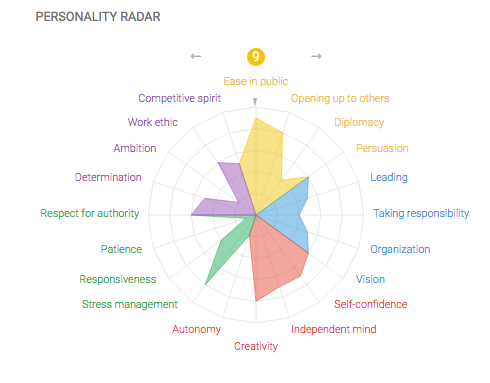
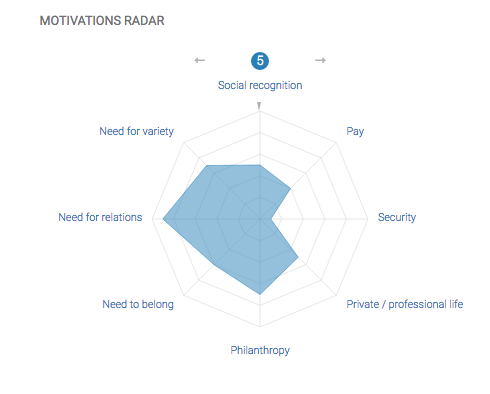
Talentoday further identifies her as a great start-up candidate with these insights:
Creativity 8 / 10: She likes to be innovative and find original solutions. She is not very conventional.
Stress Management 8 / 10: She finds it easy to keep her cool in stressful situations. She performs well under pressure.
Motivations — Security 1 / 10: She does not need security in her work; she likes to take risks.
Motivation — Need for Relations 9 / 10: She is motivated by teamwork and relations with others are very important.
The most important asset a start-up has is its people. When reviewing your candidates, identifying their personality traits is even more important than evaluating their skills. With the right personality traits, an employee can gain experience and move up the ladder, developing into exactly the long-term employee you need.
Curious to find out your professional traits? Check out our page to take your free personality assessment today. And if you like this post, please hit the ❤️ button below or give me a shout on Twitter.
Hit a Hiring Road Block?
3 Powerful Tools for Recruiting the New Generation
This is the era of the Millennials, a generation that, according to the United States Census Bureau, represents more than one quarter of the United States population and is the largest population in the United States today. Take Google’s headquarters, for example. When you walk onto the campus the first thing you see are young adults bustling between the buildings. It looks almost like a busy college campus.
As more of today’s students graduate and enter the job market, recruiters must learn how to attract them and HR teams want to be sure their new recruits will stay motivated when joining their company’s workforce. If companies want to compete with the Googleplex, they need to make their hiring process more effective and their job offerings more alluring to new hot candidates. The challenge is creating a process that is enticing to the interviewee and informative to the company while still remaining bias free. Hiring a millennial will look much different than hiring from previous generations but luckily there a few nimble start-ups dedicated to making this process a success.
Three Powerhouse Recruitment Tools
While it is the era of Millenials, it is also the era of new tech tools. As the candidate pool has evolved so has the technology. HR teams have adapted the following hiring solutions to their recruitment process to help them make more informed decisions.
- Greenhouse companies like AirBnb, Pinterest & Vimeo have successfully implemented this new software that optimizes the entire recruiting process. With Greenhouse, you can find better candidates, conduct more focused interviews, and organize the recruiting process from start to finish. Experienced interviewers don’t wing it. The interview process should be a powerful marketing tool. You want every candidate to walk out of their interview feeling impressed by your team and excited about your company. Greenhouse provides all the tools you need for powerful, structured interviewing.
- Talentoday is a HR portal where people seeking jobs can take a simple & informative questionnaire that analyzes people’s personality and motivation at work The psychometric technology leverages Talentoday’s growing 3.5 million global database of detailed personality assessments. The companies secret weapon is their job matching platform which allows you to match candidates to Job Profiles in the industry to quickly see if you have a good fit. It has a slick, modern interface and is integrated with social networks such as Facebook, LinkedIn, and Twitter, making it very appealing to this new generation.
- Interviewing.io on the other side of the house is this quickly growing company that allows engineers to skip the bullsh** and get right to the technical stuff. Hiring engineers? You can now talk directly to engineers who’ve been killing it in technical interviews. With their unique approach candidates who do well in practice, get invites to interview anonymously with great companies. That means Millennials can skip right to the technical screen without talking to recruiters, touching their resume, or worrying about bias. If you have the skills you get the job, it is as simple as that.
With these tools, a the recruitment team will be one step ahead for their candidates, providing them job opportunities that better fulfill their needs and life goals, while saving the company precious time with a more effective recruitment process.
Embracing These Modern, Powerful HR Recruitment Software
The population of job applicants is continuously changing and a new generation is entering the workforce with very different expectations and attitudes. HR teams will become better at understanding this evolution and select candidates that better fit their company, or lose top candidates to other companies who are catching on.
“Digitization, social networks, big data, and machine learning are disrupting the staffing and recruitment industry and the future of professionals hinges on the ability to understand, interpret and embrace data” — Alberding Group
Adapting new tools that combine recruitment planning, people analytics, machine learning and the latest advancements in psychology will allow companies to attract new generations of job applicants who will remain productive and committed to their job.
Curious to hear more HR & Recruiting tips? Check out additional articles. And if you like this post, please hit the ❤️ button below or give me a shout on Twitter.


